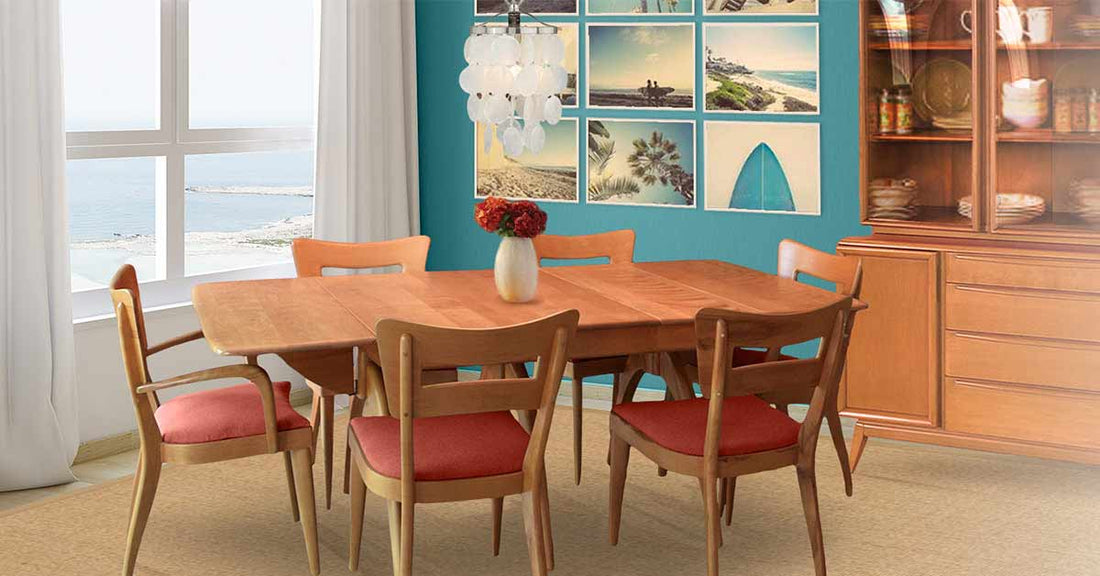
15 Tips for Arranging and Decorating a Small Dining Room
Share
The dining room is such an important living space, particularly if you're an avid entertainer or frequently have family members or friends dropping by for meals. While many people dream of an expansive dining room with space for lots of guests, an enormous china cabinet, and maybe even a wet or dry bar, not everyone is so lucky. But small dining rooms are perfectly workable with a little planning and know-how. In general, stay away from bulky furnishings and excessive decorating, as both physically and visually consume precious space. Below are some suggestions and best practices for arranging and decorating a small dining room to make it feel as comfortable and inviting as possible. These are general recommendations, and some work better than others in different spaces. Remember, while you're aiming to make smart use of the limited space, you still want to find ways to express yourself and make it yours!
How to Make the Most of a Small Dining Room
- Hang a large mirror on one wall to create a more open and expansive feel in the dining room.
- Use decorative items minimally, as clutter makes the space feel smaller and tighter. Still, don't omit them altogether, as too bare a room isn't a welcoming, enjoyable environment.
- Similarly, don't hang much on the walls. Stick to just one large accent piece (or maybe two smaller ones) in addition to the mirror.
- Find a convenient, flexible table option like Heywood-Wakefield's Butterfly Drop-Leaf Dining Table. It stores small and offers several different extension lengths to accommodate groups of different sizes, while its streamlined design doesn't add excessive bulk in the limited space.
- Alternatively, consider a round table like our Round Extended Dining Table. Circular tabletops feel more minimal and don't fill a space like a rectangular table. Ours comfortably seats 4, but comes with two inserts to extend it from 48'' to either 66'' or 84'' to easily accommodate 5 or 6 people.
- Use natural wood and other natural elements in the room, as its association with the outdoors subconsciously creates a sense of openness.
- Stay away from busy patterns (including wallpaper, tablecloths, dining seat fabrics, etc.) or more than one main, neutral color and one accent color. Too much going on in the décor easily makes a small dining room seem hectic and overwhelming.
- Hang a small chandelier or use other overhead lighting directly over the dining room table.
- Let in as much natural light as possible. Once it's dark out, let as much light wash in from surrounding rooms as possible.
- Install a piece like Heywood-Wakefield's elegant, simple Corner Cabinet that offers maximum storage and display space with a minimal footprint.
- Consider a floating shelf or two mounted to the wall for additional storage and display space without having more full furniture pieces that eat up space.
- Opt for dining room chairs that aren't bulky, and consider going with armless ones. Heywood-Wakefield's “Dog Biscuit” Dining Side Chair or “Cat's Eye” Dining Side Chair are great options, offering comfortable seats in a sleek, stylish, minimal package. Both are also available with arms if you prefer them for all seats or the two at the heads of the table.
- Go vertical. Vertical stripes, vertical blinds, hanging blinds or curtains from floor to ceiling, and similar approaches to décor that emphasize height help the dining room feel larger.
- Build a banquette on one wall if you're not opposed to a home improvement project. This is a space-efficient way to provide seating along one side of your dining table. You can even build in storage space underneath.
- Refrain from using large or bulky centerpieces while entertaining. They not only make it difficult for guests to see each other and converse comfortably, they can add a cluttered feel that seems to shrink the room.
